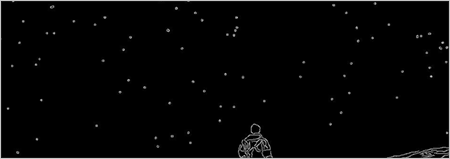Alumni

Bio
My name is Yee Ken Tai (given name: Jasper) and I am from Malaysia, Southeast Asia. I am currently finishing my second degree in applied mathematics at Metropolitan State University of Denver (MSU Denver), Denver, Colorado. Previously, I received a bachelor of science in aerospace systems engineering tech from MSU Denver. My interests are space physics and orbital and celestial mechanics, as well as astrobiology. During my undergraduate, my team represented MSU Denver and we competed in the Analytical Graphics, Inc. 2011 University Competition. We were able to backtrack the ephemeris file for 500 stars, and we showed the alignment of the stars of Orion and the pyramids in Giza. Not only that, we were also able to project the pole stars for the next 5000 years.
Moreover, I also presented two scenarios, “Recreation of the Apollo XI Mission” and “Mars Mission with the Moon’s Gravity Assist”, for the gala at the Wings over Rockies Air and Space Museum.
After my undergraduate degree, I would like to further my studies in order to obtain my PhD in space physics or aerospace engineering. Space and physics are surrounding us. It is important to know what is around us.
I enjoy in my free time playing competitive badminton and basketball. I also enjoy listening to podcast abouts science and sports. My favorite channels are Grantland, B.S. Report, and StarTalk radio.
Project: Tracking stars and information from astrophotography
Astrophotography is a technique of capturing breathtaking pictures of the stars, planets, galaxies, and/or other astronomical objects. My project is about attaching information to such pictures. Information may include the star’s name, the time when the picture was taken, and the location where it was taken.
Usually, in order to capture a given set of stars, some prior information must be known, such as the specific time or date, and the location of the observer on Earth. What I am trying to do here is to reverse this process: given a picture of the sky, is it possible to attach to it its information about time and space?
The first phase of this project is to limit any picture within a 30-year span, namely from the years 1989 to 2019. The picture should be limited to only the brightness between -1 (where a typical human eye can see only one star) and 6.5 (where it is possible to see around 9000 stars).
The first approach would be to recognize lines and basic shapes obtained by connecting the brightest stars in the picture. This is not as easy at it sounds: the same configuration is present in different locations at different times. Furthermore, planets can be present in the image, and it is very easy to mistake them for another star.
This is a picture of the sky taken in Sweden

This will be the first phase
This picture shows the brightness of the stars with a magnitude of 3 (apparent mag)

Favorite Outer Totalistic r=1, k=2 2D Cellular Automaton
Rule 942
